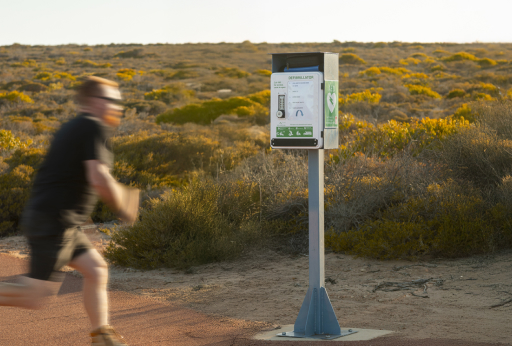A guest at your resort, caravan park, or restaurant collapses, unresponsive. It's something no business owner wants to face, but cardiac arrest can happen anywhere.
For the tourism and hospitality industries, this isn't just about safety — it's about responsibility and reputation. With over 30 cardiac arrests recorded in hotels and caravan parks in Western Australia last year, the need for accessible defibrillators is clear.
Cardiac arrest won't wait
Out-of-hospital cardiac arrest (OHCA) is a leading cause of sudden death. Almost a quarter of OHCAs occur in public locations and every minute without defibrillation decreases the chance of survival by 10 per cent. Without immediate CPR and a shock from an Automated External Defibrillator (AED), survival rates remain devastatingly low.
When a patient receives a shock before an ambulance arrives, survival rates jump to 49%
David Bignold, Peter Hall and Allan Duncan personify the importance of AEDs in WA. They were lucky to be somewhere with a registered AED.
Show your values
Western Australia's State Defibrillator Network is growing, but only 27 per cent of registered AEDs are accessible 24/7. Many businesses have defibrillators locked inside offices or reception areas, unreachable outside business hours. Those that invest in a publicly accessible AED are investing in their visitors, and their community.
Good business
For hotels, caravan parks, and tourist attractions, installing a 24/7 AED means protecting guests, employees, and reputation. Visitors trust you with their safety, and a visible AED shows a commitment to their wellbeing. It means you're ready for the unexpected.
In a competitive market, it's measures like this that make a difference.

Visitors trust you with their safety, and a visible AED shows a commitment to their wellbeing
Take action
There are three steps to a healthier community, brighter outcomes and a better business.
- Install a 24/7 accessible AED in a well-marked location with clear signage.
- Register with the St John WA Defibrillator Network to make your AED visible to the public and first responders.
- Equip your team with basic CPR and AED training so they can act fast in an emergency.
.jpg?sfvrsn=2653f9b2_0)